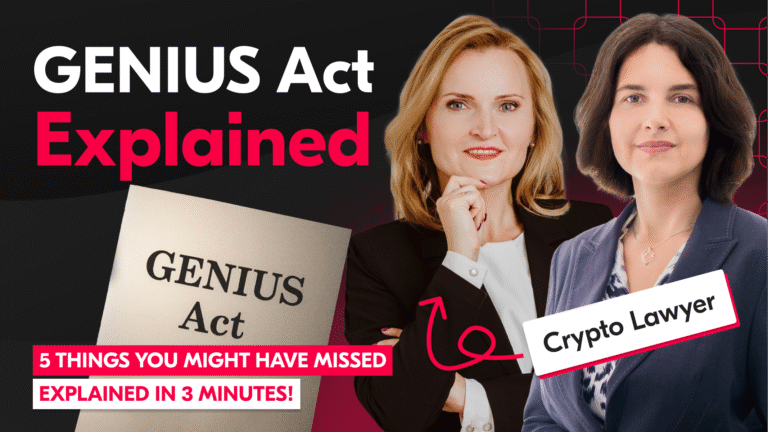Blockchain and healthcare can improve patient wellbeing and overall satisfaction. In my last article, I highlighted a few impediments and solutions to improve patient care satisfaction in the United Arab Emirates. At a macro level, key issues included:
- Fragmentation of care
- Interaction with multiple disconnected stakeholders (providers, payers)
- Fragmentation of medical records
- An inefficient and incomplete flow of information
- Approval and scheduling delays
This piece will look beyond fixing the gaps and discuss how leveraging blockchain network technology to engage patients in their own care can radically transform the patient experience.
Every health system grapples with some issues. For example, social healthcare systems might be more cohesive and face less of an ordeal with fragmented care and health records, but they often struggle with process delays and high costs. We need to build implementable healthcare solutions for our existing and unique medical landscape.
Blockchain in healthcare gives more power to patients
We need solutions that put the patient at the centre of various medical processes. Blockchain in healthcare allows this. Patients today are well-informed and want to be part of their treatment decisions. They are more agile with following up on delays and providing health information to payers as required. We need to enable them to manage their journeys and give them online access to their healthcare data to feel connected with their care team.
Blockchain-enabled patient portals can allow for interconnectedness between patients and an array of healthcare stakeholders. While many hospitals and clinics have rolled out patient portals the lack of integration with other players diminishes the value of the tool. Healthcare providers can streamline patient care and can accurately share it as required.
Once again let’s take a walk along the patient journey to briefly see how patient portals could significantly improve patient care and satisfaction in the UAE.
Using blockchain in healthcare – the trigger
Patients begin their journey once they experience symptoms. Instead of engaging in an online search or discussions with friends and family, patients can log in to their portal and undergo a preliminary assessment online. Patients can receive accurate medical guidance, and online access to their health data and understand the seriousness of their symptoms. Electronic triage is a great way to reduce delays in patient presentation and misinformation.
After triage, the patient can use the portal to select the appropriate healthcare professionals — general or specialist as per the guidance provided. Initial consultations and prescriptions can also be provided through video chats once telemedicine providers are integrated into the system.
Most importantly, patient portals integrated with payers thanks to entrusted data exchange possibilities can ensure patients that select care providers are accepted by their policy. This will remove the need for the eligibility check which currently often happens onsite on the day of the patient appointment.
Finally, the portal based on a blockchain system can also assist the patient with recording and managing their healthcare information such as symptoms during the lead-up to their appointment.
Electronic health records – the investigation
Patients arrive at their physician appointment well-informed to have an educated conversation with the physician. The portal based on the blockchain can also allow patients to track their symptoms and note down history along with any other medical information that they’re able to share with the care team. The patient’s medical record can seamlessly capture this information.
Most patients will be requested to undergo diagnostic investigations. Once again, patients are able to select a centre based on their insurance eligibility. Portals can also match patients with diagnostic centres with specific capabilities according to their preferences. For example, the portal can direct a patient who is uncomfortable with confined spaces, toward a diagnostic centre with an open MRI machine. The portal can also provide the patient with preparation for their tests — if and for how long prior they need to fast or if they are undergoing an MRI/CT with contrast, how long will they have to wait before the test, etc.
Patients can receive the investigation results and reports on their portal and grant access to their care team. The care team can review and communicate the appropriate course of action through the portal itself saving precious time in critical cases. For example, if the patient initially visited a general physician and based on the reports, now needs to see a specialist or a surgeon, the primary care doctor can instantly communicate this via the portal itself.
Blockchain solutions in a healthcare organization – the waiting
Patients nervously wait for the diagnosis and treatment plan, after which they nervously wait for insurance approval for their treatment plan. During these periods of waiting, patients often return to online searches and think of many questions. Having the support of their care team can be more calming and informative. Patient portals enabled direct messaging capabilities that can allow for high-level conversations and a feeling of connectedness.
Patient portals will be undoubtedly helpful for a quicker and more efficient insurance approvals process. There are often delays due to incomplete information from physicians, missing investigation reports, and medical coding errors, which when updated on the portal, the patient can raise an alert with their provider and sometimes even correct immediately. Patients can even appeal for denied claims through the portal with the support of their care team and external experts. Patient and provider support teams for insurance-related processes are an interesting market opportunity. Such expert teams if integrated with the portal system can assist in pre-empting denials and informing patients of possible out-of-pocket payments down the line.
Blockchain applications in healthcare – the treatment
Whether inpatient care or pharmaceutical treatment, patient portals can play a critical role in improving the patient experience during this phase. The portal can be integrated with approved medical websites and legitimate sources of information that the patient can access prior to or during treatment. This can not only reduce misinformation but also any self-adjustments to treatment the patient might make.
Patient portals can also integrate with pharmacies to inform the patient about stock availability. Patients can also alert the pharmacy before arrival to reduce delays and ensure they have all the relevant documentation.
Patients can also be notified about alternative treatments according to relevance and affordability. If the patient decides to undergo care abroad, the patient portal can serve as a key channel of communication between international and local care teams.
Patients can also be informed about ongoing clinical trials they might be eligible for. This is not only beneficial for patients but the field of medical research. Lastly, patients can connect with other patients with similar conditions in their community and gain access to other relevant patient support groups and forums.
Applying blockchain solutions to healthcare – the recovery
Post-treatment or the recovery phase is just as critical as the treatment phase — the patient must follow the prescribed regimen. The portals can prompt the patients to ensure adherence to medications, physiotherapy, or follow-up appointments.
Portals can also help track critical symptoms and abnormal changes in vitals. The care team can set these parameters for the patient and can be automatically notified if anything needs attention. Portals can be integrated with wearables to record these metrics as well.
Patients often feel a large disconnect from their care team after their treatment is complete. Patients can stay connected with their care teams through direct messaging or video calls as needed. They can also stay in touch with other patients in treatment or in recovery through forums and support groups.
Blockchain solutions for healthcare – conclusion
Patient engagement is not just helpful for patients but also for the various stakeholders of the health system. Patients who are active participants in their own health care have fewer unplanned readmissions, medical errors, and delays in care. These patients also report having higher confidence in the healthcare system.
In 2019, the Health Intelligence Network administered a Patient Engagement Survey. A total of 56 healthcare companies across the United States responded with encouraging data. 80% of the respondents attributed the improvement in care quality to patient engagement tools. There was a 69% increase in adherence to medication and treatment plans. 22% of the respondents saw a decrease in overall healthcare spending. Some of the effective patient engagement tools and processes included:
- “Intrinsic coaching.”
- “Electronic scheduling system linked to a client record.”
- “Clinical review, patient/caregiver education, clinician’s visits.”
- “Artificial intelligence to match interventions.”
A truly integrated blockchain and healthcare patient engagement system present numerous advantages beyond reducing fragmentation. For the UAE, it can be a crucial step toward building a stronger public health program. Population health alerts and patient education can be delivered through these portals. People can receive information about a specific disease awareness month or screening camps.
Patient engagement becomes particularly important as global health systems transition from an acute care model to a continuous care model. In such a case, every person effectively becomes a patient. It is not feasible for systems and providers to take care of everyone, we need to empower people to take care of themselves.
Related Posts



